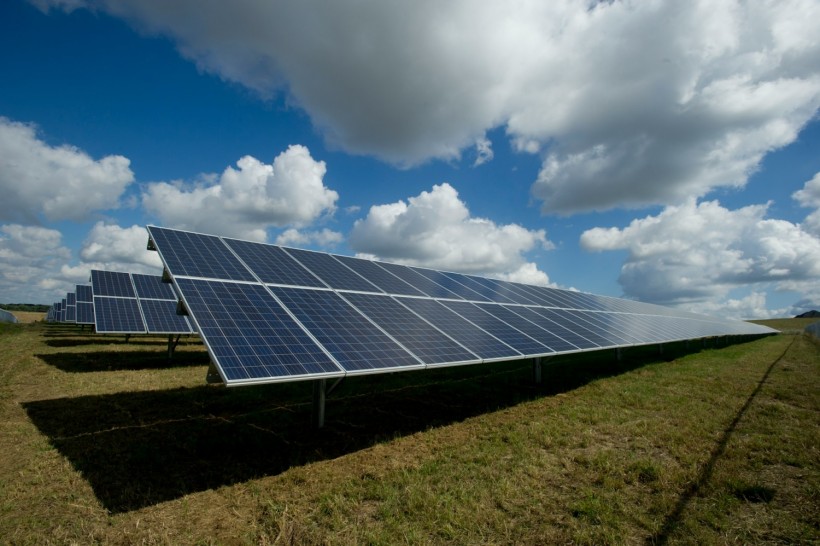Scientists have made a groundbreaking discovery in the realm of renewable energy by developing a method to mass produce solar panels using perovskite, a material hailed as a "miracle material" for its ability to significantly enhance solar panel efficiency.
While perovskite has long been recognized for its potential to change the game for renewable energy, challenges in translating its success in laboratory settings to commercial-scale solar panels have impeded progress.
Vacuum-Based Production: A Game-Changer

(Photo : American Public Power Association from Unsplash)
Researchers have discovered that there's a way to product solar panels faster. This "miracle material" can make better solar panels which are cheaper and more sustainable.
A comprehensive study conducted by researchers from the Karlsruhe Institute of Technology in Germany and the National Renewable Energy Laboratory (NREL) in the US has identified a promising solution to overcome the hurdles in perovskite solar panel production.
The study concludes that employing vacuum-based processes, commonly utilized in various industries including smartphone and LED manufacturing, offers significant advantages over traditional solvent-based methods used for lab-scale solar cells.
According to Ulrich W. Paetzold, a professor at the Institute of Microstructure Technology and Light Technology Institute at KIT, vacuum-based processes have demonstrated their reliability and effectiveness in industry for many decades, making them a viable option for large-scale production of next-generation solar panels.
Related Article: Portable, Printed Solar Cells Inches Towards Reality with New Efficiency Rate Record
Unprecedented Efficiency
Solar cells incorporating both perovskite and silicon have exhibited remarkable potential in harnessing solar energy compared to conventional silicon cells.
According to The Independent, recent breakthroughs, such as the achievement of a new world record of 33.9% efficiency for silicon-perovskite tandem solar cells by researchers from the Chinese solar technology firm Longi, underscore the immense capabilities of this technology. These next-generation cells boast a theoretical efficiency limit of 43%, significantly surpassing the 29% limit of silicon cells.
Commercialization Efforts
Exciting developments in the commercialization of perovskite solar cell technology are underway. A startup in China has announced plans to commence mass production of tandem silicon-perovskite solar cells, with a manufacturing facility slated for Jiangsu province.
Similarly, UK-based Oxford PV aims to bring this technology to market with a production facility in Germany, hinting at a promising future for perovskite solar panels on a commercial scale.
Michael Jordan of Solar Cells
If the NBA has Michael Jordan as the GOAT (greatest of all time), the solar cell industry has perovskite.
One researcher said that this material could be the key in wedding silicon fused with emerging platforms. Its impact is expected to go on for the years to come.
The recent breakthrough in perovskite solar panel production, detailed in the journal Energy & Environmental Science, marks a significant milestone in the journey towards sustainable and efficient renewable energy solutions.
With vacuum-based processes offering a viable pathway to mass production, the potential of perovskite solar panels to revolutionize the renewable energy sector is closer than ever before.
As research and development efforts continue to advance, the widespread adoption of perovskite technology holds the promise of a brighter and more sustainable future for generations to come.
Read Also: V2500 Jet Engine Passes Milestone Test with 100% Sustainable Aviation Fuel









